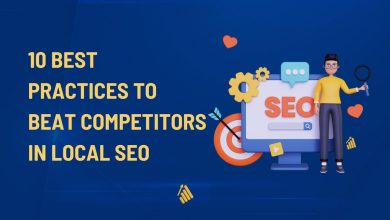Neural Search and Semantic SEO: Maximizing Organic Visibility
Staying ahead of the curve is essential for success in the ever-evolving digital marketing landscape. Various tools and strategies have existed to help digital marketers stay on top of their game.
Search Engine Optimization (SEO) has long been a cornerstone of online marketing strategies. It helps drive organic traffic and improve a website’s visibility on search engine results pages (SERPs). However, as search engines become more sophisticated and user behaviour shifts, traditional SEO practices are transforming.
Enter neural search and semantic SEO – two powerful concepts revolutionising how digital marketers approach organic visibility.
In this article, we’ll talk more about the importance of neural search, semantic SEO, and how they help digital marketers maximize their visibility.
The Rise of Neural Search
Neural search technology uses artificial intelligence (AI) and machine learning (ML) algorithms to improve the search experience. It differs from traditional keyword-based searches by incorporating context, intent, and natural language patterns instead of relying solely on exact matches and predefined rules.
This implies that search engines can now understand user queries in a more human-like way. Search engines now provide results that align with the user’s actual intention rather than just the words they use.
Semantic SEO: Beyond Keywords
Semantic SEO, an integral part of the neural search revolution, takes SEO beyond traditional keyword-centric strategies. Instead of merely optimizing content around specific keywords, semantic SEO focuses on a topic’s underlying concepts and themes. This aligns perfectly with neural search’s ability to understand context and intent.
One of the central principles of semantic SEO is entity-based optimization. Search engines now recognize entities (people, places, objects, concepts, etc.) mentioned in content and can establish connections between them. This capability enables search engines to provide richer, more comprehensive search results.
Neural Search and Semantic SEO for Maximizing Organic Visibility
Neural search and semantic SEO offer digital marketers a range of benefits that collectively maximize organic visibility. Here are the top ways:
Contextual Understanding
Neural search represents a cutting-edge approach to information retrieval that aims to comprehend the context and intent underlying user queries. It leverages advanced artificial intelligence models that are trained on vast amounts of data to understand the meaning behind user queries rather than solely relying on matching keywords.
By processing a multitude of factors such as user demographics, location, and previous search behavior, neural search can provide highly relevant search results that cater specifically to the individual user’s needs. This comprehensive understanding of context and intent allows for a more personalized search experience, ensuring that users receive the information they are looking for quickly and accurately. Overall, neural search revolutionizes the way we interact with search engines by bridging the gap between human language and machine understanding.
Higher Click-Through Rates (CTRs)
Semantic SEO increases the meaning-based relevance of content by highlighting the intent of search queries in place of fixed keywords. Such a strategy responds to the changed algorithms of search engines, where the intent to understand user need is more predominant. Through applying semantic SEO methodologies, websites benefit from increased click-through rates (CTR).
For example, using structured data in the form of schema markup can result in more informative search engine listings, which are more user-friendly and could potentially drive up CTR. Another study conducted by Backlinko reviewed 4 million Google search results and discovered that the #1 organic result receives an average CTR of 27.6%, emphasizing the value of proper SEO techniques. Also, studies suggest that semantic models in search queries can lead to significant improvements in CTR. By emphasizing semantic SEO, companies can make their content more relevant, increase search visibility, and attain higher rates of engagement.
Natural Language Processing (NLP)
Neural search’s NLP capabilities enable it to understand conversational and colloquial language. Digital marketers can create content that mirrors real-life conversations, appealing to voice search users and those using more natural language in their queries.
Long-Tail Keyword Optimization
Semantic SEO encourages the use of long-tail keywords and related entities. You can tap into a highly engaged audience by targeting specific, niche queries and potentially rank higher for less competitive terms.
User Intent Focus
Both neural search and semantic SEO emphasize understanding user intent. Addressing user needs more effectively provides value and improves user satisfaction. This leads to repeat visits and enhanced visibility.
User Experience (UX) Optimization
User experience (UX) optimization is all about understanding how users interact with a website and making improvements based on that data. When your content aligns with what users seek, they spend more time on your site, reducing bounce rates. This positive impact on UX can lead to higher search rankings and greater organic visibility.
Voice Search Optimization
Voice search optimization plays a pivotal role in neural search technology’s rise to prominence. As more individuals adopt voice-enabled devices, businesses and content providers must optimize their material accordingly for optimized voice search results. Neural search technology based on advanced machine learning algorithms relies on comprehending natural language to produce accurate search results that match users’ queries precisely, while voice search optimization seeks to maximize content visibility by adapting content so it flows with how people typically speak.
Voice search optimization requires businesses to incorporate conversational phrases, question-based queries and long-tail keywords that accurately represent how users verbalize their search intentions. By catering to this unique aspect of digital voice interactions, businesses can ensure their content is easily indexed and retrieved for online interactions involving voice-first digital interactions – ultimately elevating their digital footprint in this era of voice-led digital interactions.
Reduced Keyword Stuffing
Gone are the days when marketers would cram as many keywords as possible into their website content in an attempt to manipulate search engine rankings. This outdated practice has now given way to a more sophisticated approach that emphasizes quality, relevance, and value.
By reducing keyword stuffing, websites can focus on creating high-quality content that not only appeals to search engines but also provides valuable information to users. With semantic SEO, the focus is on understanding the intent behind users’ search queries, rather than solely targeting specific keywords. By incorporating natural language and relevant context into their content, websites can improve user experience, increase visibility on search engine results pages, and ultimately drive more organic traffic.
Rich Snippets and Featured Snippets
Neural search’s ability to extract relevant information and semantic SEO’s focus on entities can lead to enhanced rich snippets and featured snippets. These eye-catching search results can significantly increase click-through rates and organic visibility.
Future-Proofing Your Strategy
The integration of AI and ML in search algorithms is an ongoing trend. By adopting neural search and semantic SEO early, you position yourself to stay relevant in the ever-evolving digital marketing landscape, securing long-term organic visibility.
The Future of Neural Search and Semantic SEO
As AI and ML technologies continue to advance, the future of neural search and semantic SEO holds great promise for digital marketers. Personalization, another key trend in the digital landscape, is set to be elevated to new heights with the integration of these concepts. Search engines will be able to deliver hyper-relevant content tailored to individual preferences, boosting user engagement and satisfaction.
Furthermore, the potential impact of neural search and semantic SEO extends beyond traditional search engines. E-commerce platforms, content recommendation engines, and even social media algorithms can benefit from these technologies to enhance their user experiences.
Summary
Incorporating neural search and semantic SEO into your digital marketing strategy can lead to a holistic approach. We’ve discussed how these technologies can benefit your digital marketing strategy. Ultimately, these technologies will help maximize your organic visibility in a highly competitive online environment.

